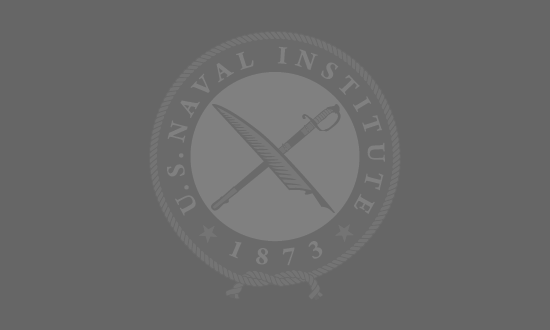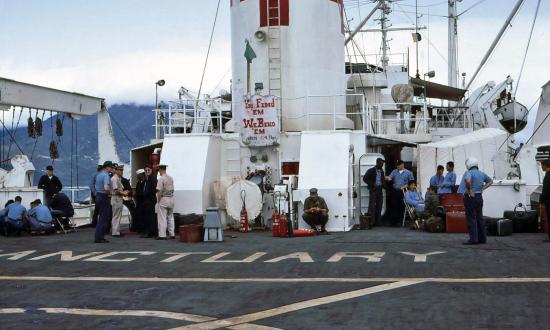The Most Important Element
William J. Daugherty
Thank you for Norman Friedman’s trenchant analysis of the Bay of Pigs (“Debacle at Bahia De Cochinos,” April, pp. 20–27) and its consequences for President John F. Kennedy. I am a Vietnam-era Marine Corps officer and a retired career intelligence officer, and I approach the Bay of Pigs from a slightly different perspective. Kennedy, having been warned from different quarters that the operation absolutely could not be permitted to fail, then proceeded to take several steps that collectively ensured it could not succeed. But there was one element of the operation that, by itself, had the ability to cause failure, even if everything else went as intended, and therefore was essential to get right.
The element was the landing beach, and the way to determine its suitability for the mission was to have it evaluated by experts in amphibious warfare. The CIA and the military did have such experts, men who had gained that expertise from experience in World War II and/or at Inchon and who also held the highest security clearances. They were left in the dark, which meant the President was left in the dark. The Joint Chiefs of Staff, including Marine Corps Commandant General David Shoup (who earned the Medal of Honor for actions during the amphibious operation at Tarawa), were deliberately ignored.
While other elements of the operation may have been within acceptable levels of risk, the suitability of the landing beach could not be compromised. Without a suitable beach, the odds of operational failure would have been 99 percent. Throw in other elements that were of uncertain risk, and failure became a matter of certainty. On learning of the multiple flaws of the Bay of Pigs as an insertion point, Kennedy should have canceled the operation and either restructured it or, perhaps better, reevaluated whether the operational objectives were likely to bring the political results desired. Debating the effectiveness or risk levels of all the other aspects of the operation might be intellectually satisfying but also is pointless. Attempting to put ashore a sizable assault force in an entirely unsuitable location destines any operation to failure.
Shield/Storm Lessons
Rear Admiral William L. Putnam, U.S. Navy (Retired)
As an addendum to Rear Admiral Thomas Marfiak’s reflections on Desert Shield and Storm (“In Contact,” April, p. 5), it should be noted that SEALs under the tactical control of then-Commander Eric Olson, operating from the surface action group (SAG) in the far north, detonated dozens and dozens of floating mines during the course of Shield/Storm. More than a few of the mines were deliberately set afloat without the formality of pretending to moor them. Given the counterclockwise currents in the Persian Gulf, the ultimate destination would have been the vicinity of Bahrain had intercept not occurred.
The SAG was grateful for the willingness of U.S. Marine Corps and Canadian F/A-18s to fly combat air patrol on Christmas Eve. Their presence, and a “rum cake” donated by the Royal Navy, made for a most enjoyable on-station experience.
Probably the greatest lesson learned for surface forces was the absolute necessity of adapting to littoral conditions. Adoption of three Army systems also was critical to the success of the SAG: the 25-mm chain gun, which bridged the caliber difference in ship systems; the AHIPS helicopter weapons system; and, most important, the mast-mounted sight radar system with its short wave length, which allowed the Leftwich (DD-984), Curts (FFG-38), and Nicholas (FFG-47) to detect floating mines at sufficient distance to initiate evasive action and eventual destruction. We also learned that service loyalty takes a back seat when combat search-and-rescue frigates invite downed pilots aboard.
April’s Treasure Trove
Hartwell Davis Jr.
The April issue is terrific, with each story exceeding the one before in content and interest. “The Enduring Legacy of the War of Jiawu” (pp. 12–19) is certainly a new page. You have never published a purely Asian conflict story to my remembrance. “Debacle at Bahia de Cochinos” was fascinating and gave me a new perspective on the Bay of Pigs disaster. “Misidentified in the Heat of Battle” (pp. 28–33) would be sufficient for a lead article. I loved “The Last Cruise of the Halibut” (pp. 34–39) and did not know that story of heroism. And my favorite article up to that late point in the issue was “The Duke of Wellington’s Navy” (pp. 40–47); Thomas Cochrane is my new captain-for-all-seasons hero. I never had heard of “Harry” Baig (“Right Marine at the Right Place,” pp. 48–53). He truly was one of a kind and a war hero beyond measure. These and the magazine’s other good stuff leave you in shallow straits against a lee shore as far as equaling this issue.
The Army’s Robert Smalls
Chief Warrant Officer 4 Michael W. Carr, U.S. Army (Retired)
The history of Robert Smalls (“A Hero,” February, pp. 27–31) is well known to me and numerous Army mariners who were the plank owners and crew on board the U.S. Army’s Major General Robert Smalls (LSV-8). (After the Civil War, Smalls, a former slave, served as a major general in the South Carolina militia.) I sailed in her as chief mate for many years and am proud of the logistics support vessel’s crew and our flawless mission executions. She is a modern, versatile, and highly capable ocean vessel that proudly represents the character of Major General Robert Smalls.
Send your letters to
InContact@usni.org





